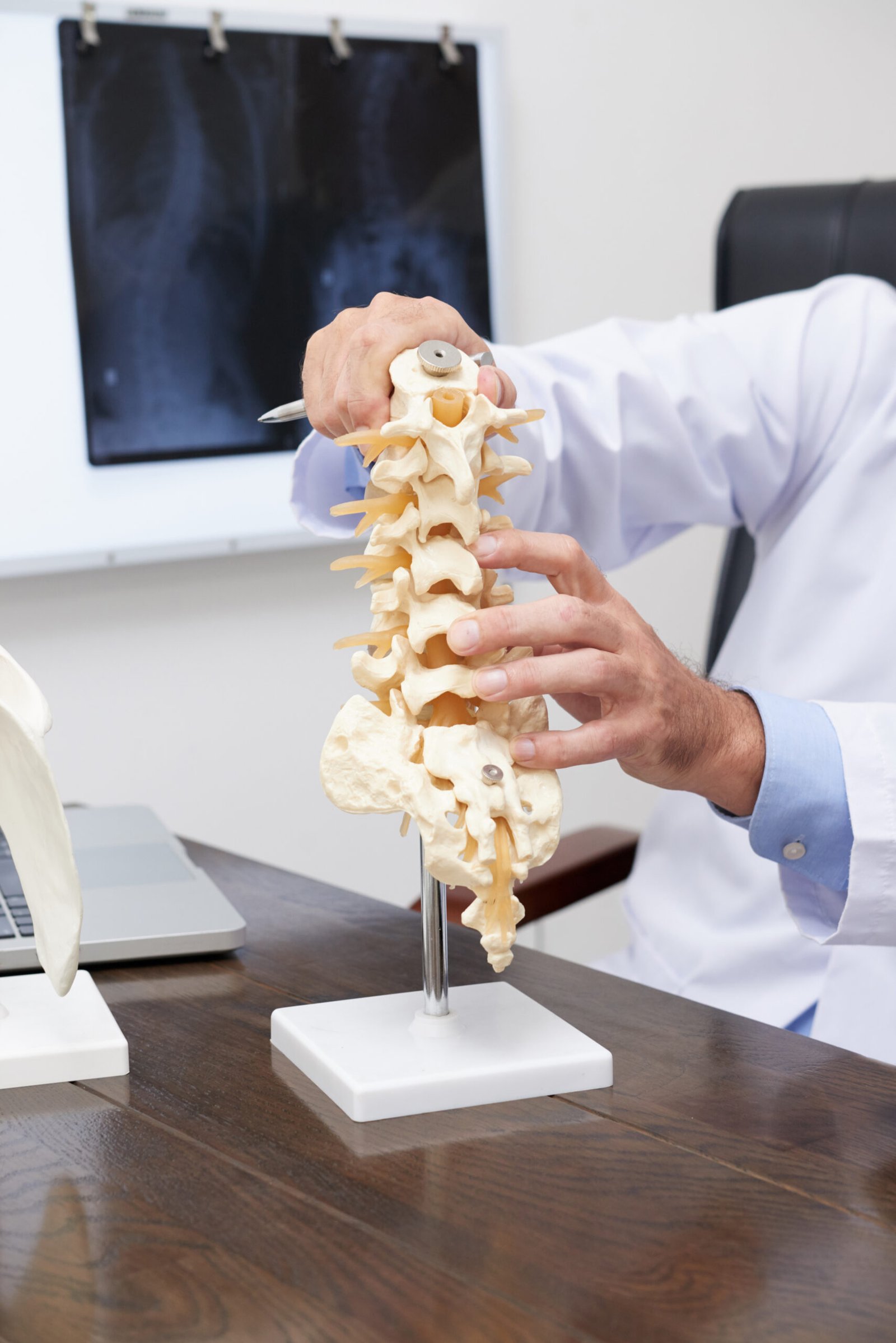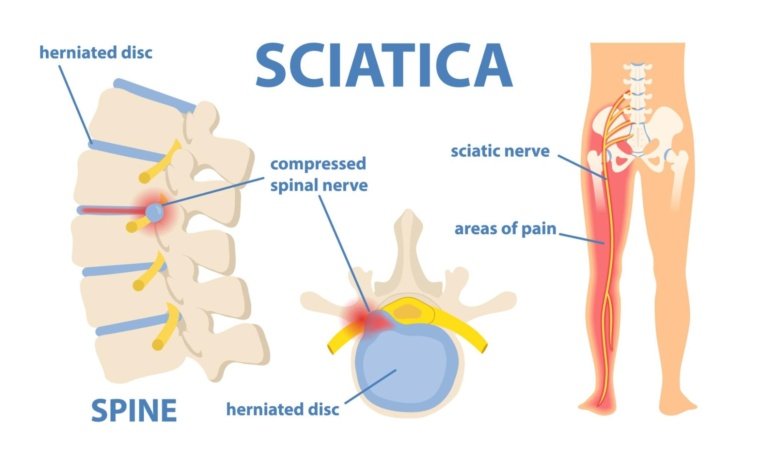Degenerative disc disease is a condition that affects the intervertebral discs in the spine, causing pain, stiffness, and discomfort. It commonly occurs with age but can also result from injury or strain.
Orthopedics
Home / Orthopedics
Spine Care
A prolapsed intervertebral disc occurs when the soft inner core of a spinal disc pushes through its outer layer, irritating nearby nerves. This can cause pain, numbness, or weakness in the affected area.
Spine fractures are serious injuries that require prompt medical attention. Understanding the causes, symptoms, and treatment options can help manage recovery and prevent further complications.
Spondylolisthesis is a spinal condition where one vertebra slips over the one below it, causing pain, discomfort, and in some cases, nerve damage. It can occur due to degeneration or trauma.
Kyphoplasty is a minimally invasive procedure used to treat spinal fractures, restore vertebral height, and relieve pain. It involves injecting bone cement into the damaged vertebra to stabilize and strengthen the spine.
Minimally invasive spine surgery (MISS) uses advanced techniques to treat spinal conditions with smaller incisions, reducing recovery time and complications. It helps relieve pain, improve mobility, and restore spinal function.
Spine infections and tuberculosis can lead to severe pain, deformity, and neurological issues if untreated. Early diagnosis and targeted treatment are crucial for preventing complications and preserving spinal function.
A transpedicular biopsy is a minimally invasive procedure used to obtain tissue samples from the spine for diagnosis. It helps identify infections, tumors, or other spinal abnormalities with precision.
TLIF (Transforaminal Lumbar Interbody Fusion) is a surgical procedure that stabilizes the spine by fusing two vertebrae, relieving nerve compression and reducing pain. It is commonly used to treat conditions like degenerative disc disease and spinal instability.
Joint Replacement
Hip joint replacement is a surgical procedure to replace a damaged hip joint with an artificial implant, restoring mobility and reducing pain, often caused by arthritis or injury.
Knee joint replacement is a surgical procedure to relieve pain and improve mobility in patients with severe arthritis or injury. This guide covers key details, benefits, and common questions.
Shoulder joint replacement surgery involves replacing damaged parts of the shoulder with artificial components to restore function and reduce pain. It's commonly performed for arthritis or severe shoulder injuries.
Elbow replacement surgery restores joint function and relieves pain caused by arthritis or injury. It involves replacing damaged elbow parts with metal and plastic components for improved mobility.
Joint preservation surgery helps restore joint function and delay replacement through minimally invasive techniques. It reduces pain, improves mobility, and extends joint longevity.
High Tibial Osteotomy (HTO) is a surgical procedure that realigns the knee to relieve pressure on damaged cartilage, delaying the need for joint replacement. It is commonly used for early-stage knee arthritis or misalignment in active individuals.
Unicondylar knee replacement, or partial knee replacement, is a minimally invasive surgery that replaces only the damaged portion of the knee. It preserves healthy tissue, offers quicker recovery, and improves joint function.
Arthrodesis, or joint fusion surgery, permanently joins two bones to reduce pain and improve stability in severely damaged joints. It is commonly used for arthritis, fractures, or deformities that do not respond to other treatments.
Fracture And Trauma
Fractures and trauma in dentistry involve damage to teeth and surrounding structures. They can be classified as simple or complex, requiring precise diagnosis and tailored treatment for optimal recovery.
Post-traumatic deformity correction involves the surgical treatment of deformities caused by trauma, aiming to restore function and aesthetics. This process requires careful assessment, planning, and rehabilitation for optimal outcomes.
Non-union and pseudoarthrosis occur when a broken bone fails to heal properly, leading to persistent pain and instability. Advanced treatments, including bone grafting and fixation techniques, help restore bone healing and function.
Pathological fractures occur when weakened bones break due to underlying conditions like osteoporosis or cancer. Treatment focuses on stabilizing the fracture and addressing the root cause to prevent future breaks.
Osteoporotic fractures occur due to weakened bones, often from osteoporosis, making them more prone to breaks. Treatment focuses on fracture repair, bone strengthening, and prevention of future fractures.
Pain Management
Neck pain, often associated with cervical spine issues, can affect daily life significantly. Understanding its causes, symptoms, and treatments is crucial for effective relief and management.
Back pain and lumbar spondylosis are common conditions affecting the lower spine. Understanding their causes, symptoms, and treatment options can help alleviate discomfort and improve quality of life.
Joint pain or arthritis can significantly affect daily life. It involves inflammation, causing pain and stiffness, which worsens with age. Early diagnosis and treatment are key for effective management.
Muscle pain, commonly known as myalgia, can be caused by various factors. Understanding its symptoms, causes, and treatment options can help in effective management and prevention of discomfort.
Sciatica causes pain, numbness, or tingling along the sciatic nerve, often due to a herniated disc or nerve compression. Treatment includes physical therapy, medication, and lifestyle changes to relieve symptoms and improve mobility.
Tennis elbow is a painful condition caused by overuse of the forearm muscles, leading to inflammation of the tendons. Treatment includes rest, therapy, and, in severe cases, surgical intervention.
Frozen shoulder is a condition causing stiffness and pain in the shoulder joint, limiting movement over time. Treatment focuses on reducing pain and restoring mobility through therapy or, in severe cases, surgery.
Heel pain, often caused by plantar fasciitis or retrocalcaneal bursitis, can make walking painful and limit mobility. Proper treatment, including rest, stretching, and supportive footwear, helps relieve discomfort and prevent chronic issues.
Sports Injuries
Arthroscopic knee surgery is a minimally invasive procedure to treat various knee conditions. It uses small incisions and a camera to assist in diagnosing and repairing knee damage.
Arthroscopic shoulder surgery is a minimally invasive procedure used to treat various shoulder conditions, involving small incisions and a camera for better diagnosis and treatment, reducing recovery time.
Cartilage restoration is a medical procedure aimed at repairing or regenerating damaged cartilage in joints, offering solutions for pain relief and improving mobility. Various methods, including surgical techniques, are available for treatment.
Osteotomies in dental surgery involve the surgical cutting of bone, often used in various procedures such as tooth extractions, jaw realignments, or correcting deformities. These procedures help restore function and aesthetics.

































